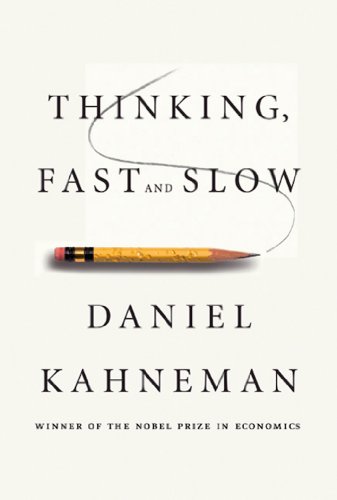

This article is an excerpt from the Shortform summary of "Thinking, Fast and Slow" by Daniel Kahneman. Shortform has the world's best summaries of books you should be reading.
Like this article? Sign up for a free trial here .
What is cognitive ease? What is it good for, and when does it hinder you?
Cognitive ease is an internal measure of how easy or strained your cognitive load is. In a state of cognitive ease, you’re probably in a good mood, believe what you hear, trust your intuitions, feel the situation is familiar, are more creative, and are superficial in your thinking.
We’ll cover the properties of cognitive ease and how to use the concept to get your point across and convince others of its truth.
Cognitive Ease
If you’re in a state of cognitive ease, your System 1 is humming along, and System 2 accepts what System 1 says.
In a state of cognitive strain, you’re more vigilant and suspicious, feel less comfortable, invest more effort, and trigger System 2. You make fewer errors, but you’re also less intuitive and less creative.
Cognitive ease increases with certain inputs or characteristics of the task, including:
- Repeated experience
- Clear display
- Primed idea
- Good mood
You don’t consciously know exactly what it is that makes it easy or strained. Rather, the ease of the task gets compressed into a single “is this easy” factor that then determines the level of mental strain you need to apply.
Drilling down into each input of cognitive ease:
Increasing Cognitive Ease
Repeated Experience / Mere Exposure / Familiarity
Exposing someone to an input repeatedly makes them like it more. Having a memory of a word, phrase, or idea makes it easier to see again. This increases cognitive ease.
Example experiments:
- People are exposed to a set of made-up names. A few days later, they are given a list of names and asked to point out which names belong to celebrities. The subjects are more likely to falsely identify the random names as those of celebrities if they were previously exposed to them.
- People are exposed to a set of Turkish words at different frequencies. When they are later asked to rate a set of words on a good-bad scale, the subjects perceive the more frequently shown words as more positive.
Even a single occurrence can make an idea familiar.
- Say a car lights on fire a block away from your house. The first time, it’s shocking. The second time you see it, it is far less surprising than the first time it happened.
If the new idea fits your existing mental framework, you will digest it more easily, increasing cognitive ease.
Evolutionarily, this benefits the organism by saving cognitive load. If a stimulus has occurred in the past and hasn’t caused danger, later occurrences of that stimulus can be discarded. This saves cognitive energy for new surprising stimuli that might indicate danger.
However, this can cause a potentially dangerous bias. You will tend to like the ideas you are exposed to most often, regardless of the merit of those ideas.
You cannot easily distinguish familiarity from the truth. If you think an idea is true, is it only because it’s been repeated so often, or is it actually true? (Shortform note: thus, be aware of “common sense” intuitions that seem true merely because they’re repeated often, like “searing meat seals in the juices.”)
Furthermore, if you trust a source, you are more likely to believe what is said.
Using Cognitive Ease
Clear Display
You can use the idea of cognitive ease to convince people to believe in the truth of something you’ve written. In general, to be more persuasive, make the message as easy to digest as possible. In other words, ease your listener’s cognitive load.
Consider the two statements:
- Adolf Hitler was born in 1891.
- Adolf Hitler was born in 1887.
Which one do you think is correct?
You likely found the first one a bit more believable, because it stood out. In reality, Hitler was born in 1889.
Here are tips to making your message more persuasive through the use of cognitive ease:
- Increase the contrast and make it easier to read. Use high-quality paper.
- If colored, use vivid colors of blue or red rather than pale neutral colors.
- Use simpler language. Pretentious language is interpreted as a sign of poor intelligence and low credibility.
- Make your ideas rhyme and put them in verse if you can.
- “Woes unite foes.” is interpreted as more meaningful as “Woes unite enemies.”
- When citing a source, choose one with an easier name to pronounce.
(Shortform note: In the O.J. Simpson trial, both mere exposure and clear display were used in catchphrases like “if the glove doesn’t fit, you must acquit.”)
In contrast, making cognition difficult actually activates System 2.
- For the $1.10 bat and ball problem you saw in the last chapter, making print smaller and difficult to read increased the accuracy of responses significantly.
Emotions and Cognitive Ease
Cognitive ease is associated with good feelings. In contrast, cognitive strain tends to promote bad feelings.
- Stocks with phonetically reasonable symbols (like KAR) outperform non-words like PXG or RDO. This is likely because symbols you can pronounce lessen your cognitive load. This leads to more positive associations with the stock.
The causality also works in the opposite direction: your emotional state affects your thinking.
- In the three-word creative association test (in Part 1-3, below), people instructed to think about sad memories were half as accurate in their intuition as those who thought about happy memories.
- When we are uncomfortable and unhappy, we lose touch with our intuition. (But we are also more engaged with our System 2).
Cognitive Ease: You Can’t Always Tell Why Something is Easy
Again, cognitive ease is a summary feeling that takes in multiple inputs and squishes them together to form a general impression. When you feel cognitively at ease, you’re not always aware of why – it might be that the idea is actually sound and fits your correct view of the world, or that it’s simply printed with high contrast and has a nice rhyme.
Cognitive ease is associated with a “pleasant feeling of truth.” But things that seem intuitively true may actually be false on inspection.
———End of Preview———

Like what you just read? Read the rest of the world's best summary of "Thinking, Fast and Slow" at Shortform . Learn the book's critical concepts in 20 minutes or less .
Here's what you'll find in our full Thinking, Fast and Slow summary :
- Why we get easily fooled when we're stressed and preoccupied
- Why we tend to overestimate the likelihood of good things happening (like the lottery)
- How to protect yourself from making bad decisions and from scam artists






